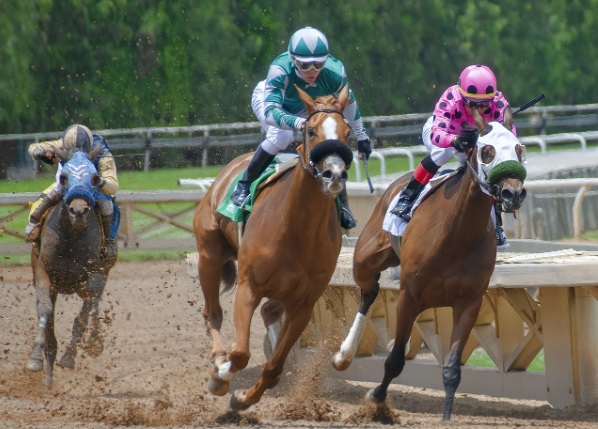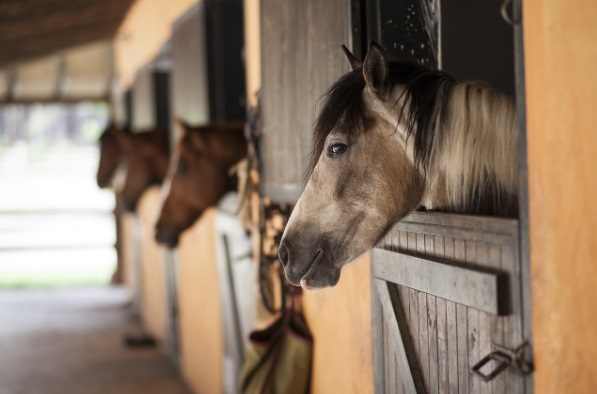Among all kinds of sports that are currently popular in the UK, horse racing takes a special place. The confirmation for that is the official website of the GG Bet, which allows locals to place a bet on horses, if they are watching a race or just want to have fun. But true enthusiasts not only watch other sportsmen, but also build their own yards for racing horses.

Searching For A Perfect Spot
Owning and caring for a racehorse requires dedication, time, and resources. There are even fees that must be billed annually, if a person wants to have one of those. An often overlooked but critical component of proper racehorse care is creating an optimal outdoor space or yard. When thoughtfully designed, a horse’s yard can greatly contribute to the animal’s health, training regimen, and quality of life. It is important to explore tips for constructing the perfect yard for a racing thoroughbred:
- Location. When choosing a place for the yard, look for a quiet, peaceful setting away from busy roads or noisy neighbors. Racehorses are easily spooked, so limiting disturbances and commotion is key. The space should get ample sunshine to keep the area dry but have shady spots where the horse can get relief on hot summer days. Easy access to trails, training tracks, and other exercise areas is ideal.
- Size Matters. Bigger is usually better when planning a racehorse yard. The recommended minimum size for a single horse paddock is 1/2 an acre. This allows ample room for the horse to roam, roll, buck, and kick. Space for the horse to expend pent-up energy is critical. When constructing multiple enclosures or paddocks, make sure each area meets the half-acre recommendation to prevent overgrazing.
- The Perimeter Fence. Invest in the safest, sturdiest fencing right from the start. The fence should be at least five feet high and visible to prevent accidental injury. Wood is attractive but requires intense maintenance to withstand weathering and horse chewing. Durable no-climb horse mesh with reinforced posts is a popular, safer choice. The perimeter gate should be wide enough to fit trailers and equipment with a sturdy latch high up, so the horse can’t manipulate it.
- Footing Fundamentals. The ground surface or footing inside the yard merits thoughtful attention. Muddy paddocks not only expose hooves to bacteria and fungi but can cause slipping injuries. Good drainage is essential. Cover bare patches of earth with sand, wood chips, or gravel to limit mud. Grass is great, but be vigilant about overgrazing. Rotate access to different yards or sections. Irrigate and fertilize to maintain healthy turf.
- Shelter Considerations. Horses always appreciate shelter from sun, wind, rain, and snow. A basic lean-to shed provides refuge on stormy days and a shady respite in extreme heat. The shelter’s open face should angle away from prevailing winds. Overhangs keep the interior dry while allowing light and air circulation. Place the shelter near the fence line to preserve wide-open space for training and exercise. Bed with straw to absorb urine and promote cleanliness.
- Water and Electricity. Convenient access to fresh, clean water is non-negotiable. Choose a frost-proof, heated hydrant to prevent freezing in winter. Situate automatic waterers inside the shelter during winter months. Install sufficient electrical outlets around the perimeter for clipping, vacuuming, and other grooming needs. Proper lighting inside the shelter allows late night checks on a foaling mare or sick horse. Consider video surveillance if security is a concern.
Do not forget the finishing touches that make all the difference. Install safety clips on gates and fences to prevent loose horses from wandering. Seed the yard with horse-friendly grasses and vegetation that entice grazing and prevent erosion. Place several large, smooth stones around the area for hoof conditioning and massage. Position a wall-mounted fly spray system to deter irritating insects. A hose reel with retractable hose makes paddock cleaning simpler.

Try Experimenting
With mindful planning and strategic construction, a racehorse’s yard can become their own personal haven. Following these tips will help create a space tailored specifically for the health, safety and performance needs of an equine athlete. The little details and special touches ensure owners provide the very best care and quality of life for their treasured thoroughbred. It is important to understand that each specific case is individual and requires experimentation with different approaches to how a yard for a racing horse should be created.

